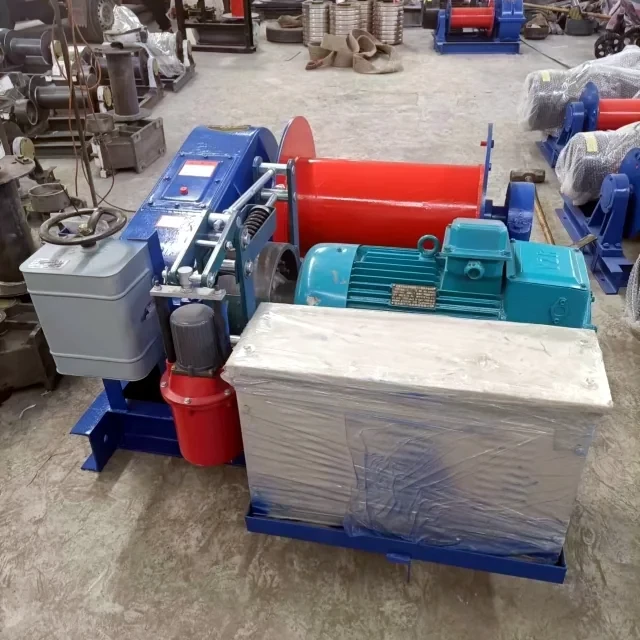Introduction
Winter transforms hoist inspection from routine maintenance into a mission-critical operation. For mining operators, sub-zero temperatures introduce unique failure mechanisms—from hydraulic fluid thickening to frost-induced brake failures—that standard inspections often miss. This guide delivers specialized winter protocols validated by real-world incidents, equipping your team with temperature-specific benchmarks for wire ropes, hydraulics, and electrical systems.
Hoist Winterization Challenges in Mining Operations
Cold-Weather Vulnerabilities in Critical Components
Hoists face accelerated wear below -20°C. Key components at risk:
- Wire ropes: Steel contracts in cold, increasing tension beyond design limits
- Hydraulic reservoirs: ISO VG 32 fluid viscosity spikes by 300% at -30°C
- Brake linings: Ice accumulation reduces friction coefficients by up to 40%
Ever wondered why a hoist that passed summer inspections fails in January? Temperature shifts create invisible stress points.
Temperature-Dependent Inspection Benchmarks
Winter inspections require adjusted tolerances:
| Component | Summer Standard | Winter Adjustment |
|---|---|---|
| Wire rope wear | 10% diameter loss | 7% diameter loss |
| Hydraulic pressure | 3000 psi | 3500 psi max cold-start |
| Brake response time |
Operational Risk Mitigation Strategies
Hydraulic System Cold-Start Protocols
- Preheat cycles: Run pumps at 50% load for 15 minutes before full operation
- Viscosity monitoring: Use inline sensors to detect fluid thickening
- Reservoir insulation: Mineral wool wraps maintain +5°C in -40°C environments
Visual metaphor: Cold hydraulics act like molasses in a syringe—without preheating, you're forcing components to work against physics.
Wire Rope Integrity Assessment in Sub-Zero Conditions
- Magnetic flux testing: Detects internal fractures masked by surface ice
- Torsion checks: Cold-stiffened ropes show abnormal twist patterns
- Sheave alignment: Thermal contraction misaligns grooves by up to 3mm
Case-Based Validation of Winter Checklists
Frost-Induced Brake Failure Incident Analysis
Scenario: A hoist in Yukon mines dropped 2 meters during lowering in -45°C.
Root cause: Ice layers between brake discs reduced stopping force by 52%.
Prevention:
- Install brake caliper heaters (maintain 10°C minimum)
- Implement twice-daily visual ice inspections
Condensation-Related Electrical Short Circuit Case
Scenario: Control panel failure halted operations for 18 hours in Colorado.
Findings: Daily thermal cycling created condensation pools on relay contacts.
Solution:
- Apply conformal coating to PCBs
- Use nitrogen-purged enclosures
Conclusion & Actionable Winter Prep Steps
- Adopt temperature-adjusted tolerances for all load-bearing components
- Retrofit cold-weather kits (heated brakes, insulated hydraulics)
- Train teams on winter-specific failure modes through scenario drills
For operations using Garlway winch systems, prioritize models with integrated cold-start assist and thermal monitoring—features designed to maintain performance at -30°C.
Final thought: In mining, winter isn't just a season—it's a different operational reality requiring redesigned safety margins.
Related Products
- JDY350 Electric Hydraulic Mortar Mud Concrete Mixer
- Commercial Construction Mixer Machine for Soil Cement Mixing Concrete
- Portable Concrete Mixer Machine Equipment for Mixing Concrete
- Hydraulic Concrete Mixer Machine Cement Mixing Equipment for Mixture Concrete
- HZS180 Ready Mix Concrete Plant for Foundations with Sand and Cement
Related Articles
- How Proper Dry Mortar Mixer Maintenance Prevents Costly Downtime
- How to Reduce Industrial Mixer Noise: 3 Proven Strategies for Quieter Operations
- How Small Cement Mixers Solve Big Construction Challenges
- How Automated Concrete Mixing Stations Transform Large-Scale Construction
- How to Optimize Large Concrete Mixing Stations: Key Systems and Efficiency Strategies











